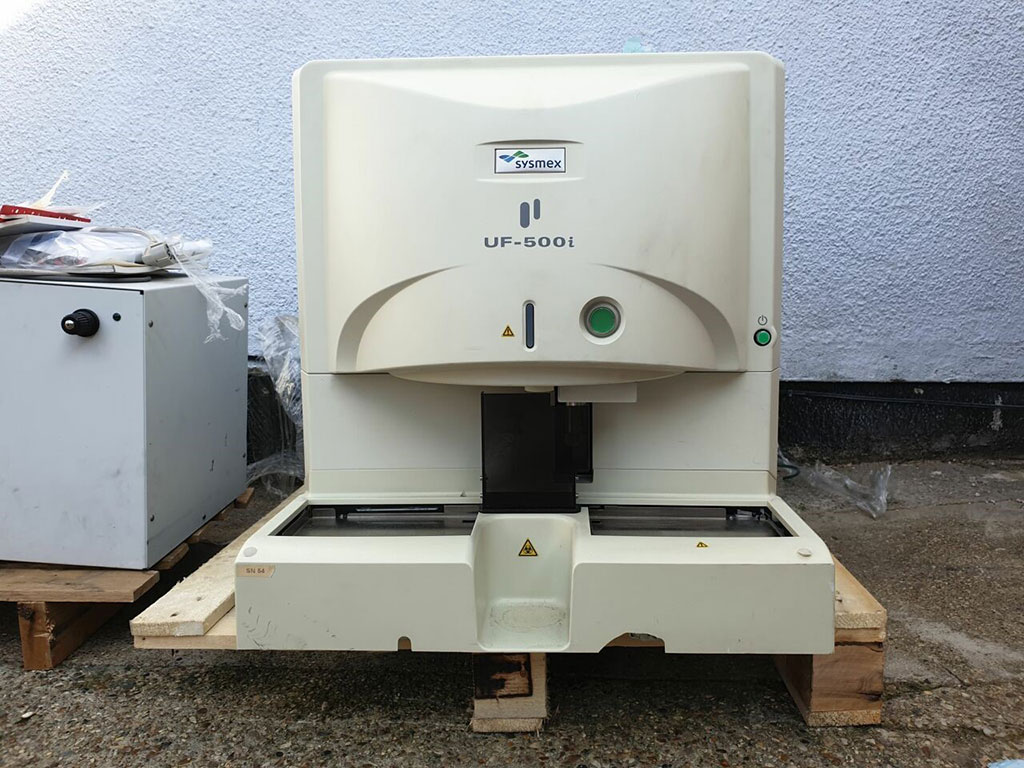Flow Cytometry Employed in Diagnosing Male Urethritis
By LabMedica International staff writers
Posted on 17 Dec 2020
According to the established guidelines, diagnosis of non-gonococcal urethritis should be confirmed by demonstrating polymorphonuclear leukocytes from the anterior urethra using a Gram-stained (GSS) or methylene blue-stained urethral smear.Posted on 17 Dec 2020
There are several methods for detecting these infections. In recent years, new technologies have emerged in the field of urinalysis methodology, offering quick and standardized opportunities in everyday clinical practice. However, there is only limited information about how to use flow cytometry in diagnosing male urethritis.

Image: The UF-500i fully automated urine particle analyzer (Photo courtesy of Sysmex Corporation).
Medical Andrologists and their colleagues at Tartu University Hospital (Tartu, Estonia) recruited 306 male patients with infectious urethritis caused by Chlamydia trachomatis, Neisseria gonorrhoeae, Mycoplasma genitalium and/or Trichomonas vaginalis. The control group consisted of 192 patients without uro-genital complaints, negative tests for C. trachomatis, N. gonorrhoeae, M. genitalium and T. vaginalis from first-voided urine and no inflammation in first-voided urine, mid-stream urine and urine after prostate massage.
The concentration and total count of white blood cells and bacteria in urine were analyzed using urine flow cytometry. The analyses were performed using fully automated urine particle analyzer Sysmex UF-500i (Sysmex Corporation, Kobe, Japan). Urethritis-associated sexually transmitted infections (STIs were detected from the first-voided urine using a PCR method: C. trachomatis and N. gonorrhoeae DNA by cobas 4800 CT/NG Test (Roche Diagnostics, Risch-Rotkreuz, Switzerland); M. genitalium DNA /Mycoplasma genitalium Real-TM; T. vaginalis DNA by Trichomonas vaginalis Real-TM (Sacace Biotehnologies, Como, Italy).
The investigators reported that the most prevalent infection was chlamydia (64.1%), followed by Mycoplasma genitalium (20.9%), gonorrhoea (7.8%) and trichomoniasis (1.6%). Gonorrhoea caused the highest flow-cytometric leucocyte/bacteria count, followed by chlamydia and Mycoplasma genitalium. Trichomonas vaginalis showed nearly absent inflammation in first-voided urine. Using an empiric flow-cytometry diagnostic threshold for urethritis in first-voided urine (leucocytes ≥ 15/μL and bacteria ≥ 20/μL), the total calculated sensitivity was over 90%. However, when applying such criteria for deciding whether to perform first-voided urine PCR for C. trachomatis, N. gonorrhoeae, M. genitalium and T. vaginalis or not, the team could miss 23 cases with infectious urethritis that makes up 7.5% of all proven cases.
The authors concluded that C. trachomatis (CT) is the most prevalent urethritis-associated STI among the men consulting an andrologist, followed by M. genitalium (MG). A strong inflammatory reaction accompanied by high bacterial concentration in first-voided urine as revealed by flow cytometry is highly predictive of NG infection (sensitivity >95%), while the sensitivity of this method remains slightly lower for CT and MG (>92%) and very low for infrequently occurring T. vaginalis. The study was published on December 2 2020 in the journal PLOS ONE.
Related Links:
Tartu University Hospital
Sysmex Corporation
Roche Diagnostics
Sacace Biotehnologies




 assay.jpg)








